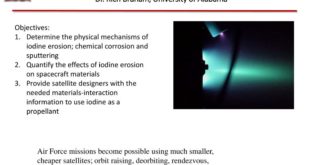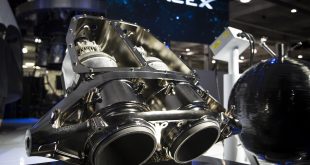Propulsion systems can be classified based on their dependence on the onboard power: electric and non-electric systems. Electric propulsion systems are mainly classified into resistojet, electrospray, ion, Hall and pulsed plasma systems, and they actively require on-board power for their operation, while the non-electric propulsion systems can be classified into …
Read More »Perovskite solar cells manufacturing methods enable cheap and ultra high efficiency solar panels powering tablets to buildings’ electrical grids
Increasing energy demand, environmental issues, and limited availability of fossil fuels are demanding research on sustainable and renewable energy resources. The sun is the ultimate source to accomplish clean energy demand and photovoltaics, also known as solar PV, have been growing exponentially to harness it. The global solar photovoltaics (PV) …
Read More »Laser-based wireless power transmission (LWPT) technology
Wireless power transfer (WPT), wireless power transmission, wireless energy transmission (WET), or electromagnetic power transfer is the transmission of electrical energy without wires as a physical link. In a wireless power transmission system, a transmitter device, driven by electric power from a power source, generates a time-varying electromagnetic field, which …
Read More »DARPA plans Laser-based wireless power transmission network on Battlefield
Wireless power transfer (WPT), wireless power transmission, wireless energy transmission (WET), or electromagnetic power transfer is the transmission of electrical energy without wires as a physical link. In a wireless power transmission system, a transmitter device, driven by electric power from a power source, generates a time-varying electromagnetic field, which …
Read More »Thermophotonics cooling with light-emitting diodes
Thermophotonics (often abbreviated as TPX) is a concept for generating usable power from heat which shares some features of thermophotovoltaic (TPV) power generation. Thermophotonics was first publicly proposed by solar photovoltaic researcher Martin Green in 2000. However, no TPX device is known to have been demonstrated to date, apparently because …
Read More »Roll Out Solar Array (ROSA) are flexible and lightweight solar array being tested on Satellites
The solar cells produce electrical power (current) from incident sunlight. However, individual solar cells generate very little power. So, in order to generate more power, a group of cells that are present in an array form can be used. Solar arrays are primarily used in satellites in order to provide …
Read More »Improved Lead-Acid Batteries including lead-crystal and carbon foam batteries making comeback
Virtually every modern naval weapons system, in fulfilling its mission, is highly dependent upon the performance characteristics of its electrochemical power supply. For example, batteries are used to power detection, guidance, control, ignition, propulsion, arming, fuzing, transmitting and jamming devices. The need for weapons with increased range, speed, endurance, sensitivity …
Read More »Satellite Electric Power Subsystem (EPS) is a vital subsystem providing the power required for mission
Satellite present in an orbit should be operated continuously during its life span. All the satellites require internal power in order to operate various electronic systems and communications payloads that are present in it. The Electrical Power System (EPS) is a vital subsystem whose primary role is to supply satellite …
Read More »China displaces US as global leader In Renewable Energy enabling strategic military advantage
A burgeoning economic, political and military power, China is also aiming to lay down a marker on the renewable energy sector. On 22 September 2020, President Xi declared China’s commitment to achieving carbon neutrality by 2060, at the 75th Session of The United Nations General Assembly. China joined over a …
Read More »Hypergolic propellant
A rocket is defined as a technologically advanced reaction motor that can carry its oxidant to propel a launch vehicle. A reaction motor is used as a propulsion device to generate a forward push by expelling the rocket structure in a backward direction. A missile is an unmanned rocket vehicle. …
Read More » International Defense Security & Technology Your trusted Source for News, Research and Analysis
International Defense Security & Technology Your trusted Source for News, Research and Analysis








